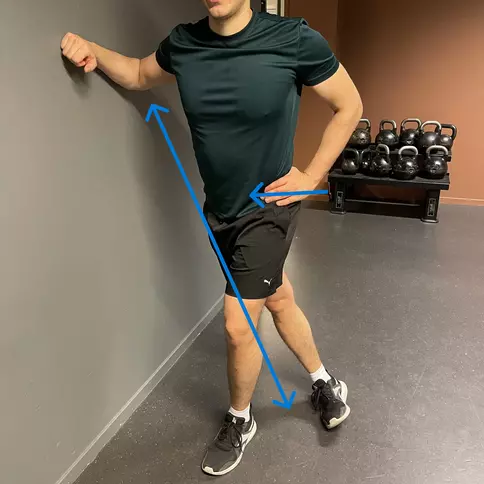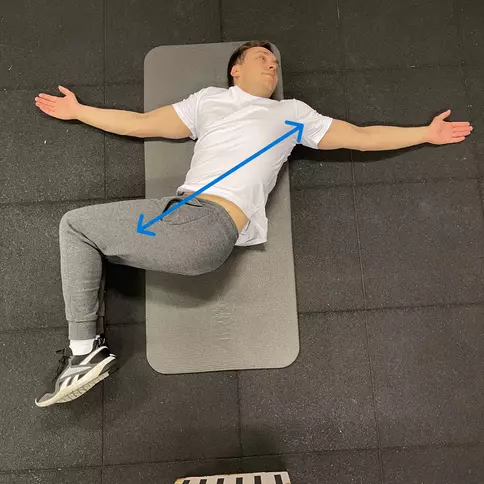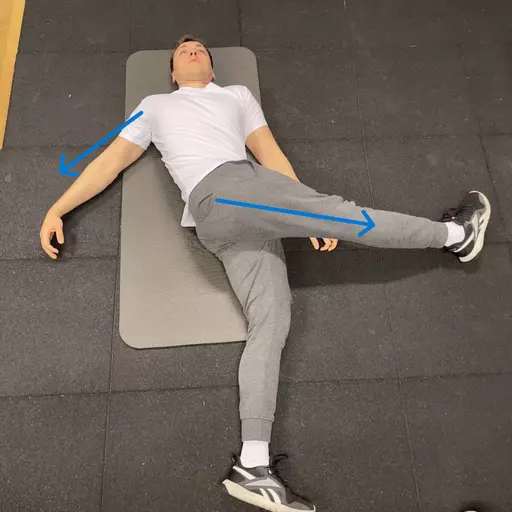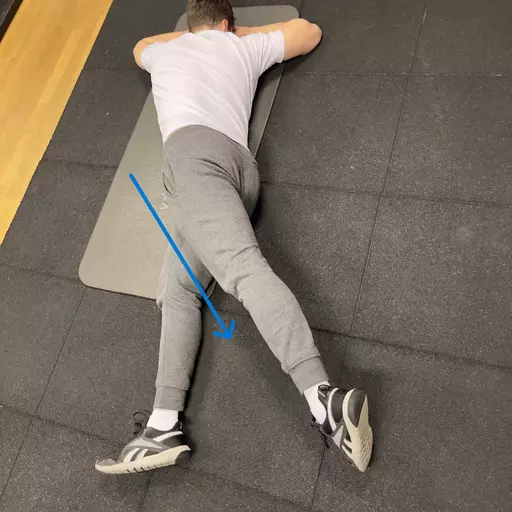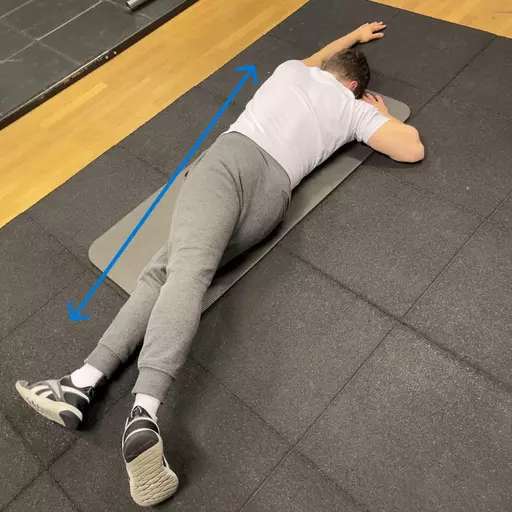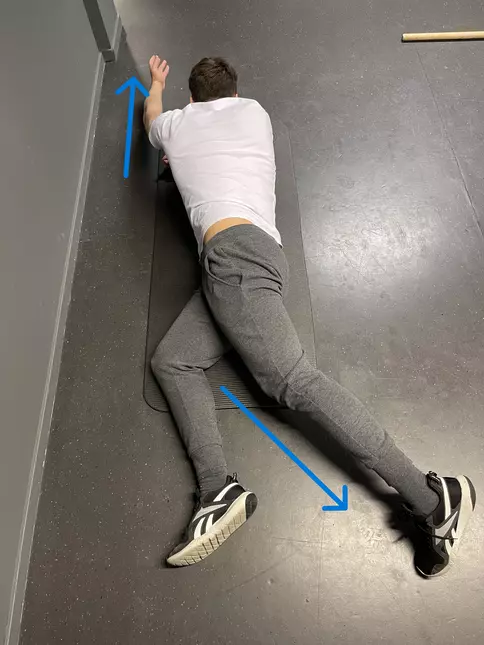6 Best Oblique Stretches for Core Mobility (From Easiest to Most-Challenging Stretches for Abs And Obliques)
Making sure you have functional (both strong and flexible) obliques will enhance your upper body posture and increase torso mobility. In this article, I’ll present you with a few effective oblique stretches you can perform without any stretching equipment.
Best Oblique Stretches
You probably know the anatomy of oblique muscle, but here is a reminder anyway. Obliques consist of external and internal oblique muscles.
External oblique muscle: contributes to lateral flexion and rotation of the trunk to the opposite (contra lateral) side.
Internal oblique muscle: contribute to lateral flexion and rotation of the trunk to the same side.
Both muscles are active in trunk flexion when both sides contract.
Love handles: If you’re familiar with this term, the love handles refer to the side of a trunk, where oblique muscles are located.
Let’s see some stretches for the obliques, both external and internal.
I’ll show you exercises from easiest to hardest.
Standing Oblique Stretch
- Start from a standing position by a wall
- Cross your legs and extend your back leg
- Lean with your elbow on a wall
- Push your hips towards the wall until you feel stretch in abs and obliques.
- Hold this position for 30s
- This image is showing the stretching of right external and internal oblique muscle.
Lying Knee Rotation
- Start by lying down on your back (supine position)
- Bend your knees and hold your arms on the ground
- Rotate your legs to one side.
- Make sure you don’t lift your shoulders.
- Repeat this stretch ten times.
Prone oblique stretch is an excellent way to dynamically stretch obliques, but you can perform this stretch as a static hold also.
Lying Hip Rotation with Knee Extension
- Starting from lying on your back, rotate one leg to the opposite side
- Extend your knee
- Simultaneously rotate your body to the opposite side of your leg
- Hold this stretch for 30s.
This is one of the basic stretches for abs and obliques.
Prone Oblique Stretch
- Lay down on your stomach
- Place your hands under your chin
- Lift and move one leg to the opposite side
- Hold this position for 30s
This stretch is more for the side oblique (external) part.
Prone Oblique Stretch with Arm Protract
- Lay down on your stomach
- Lift and move one leg to the opposite side
- Lift the same arm from the ground, and extend your arm above your head (protract)
- Hold this position for 30s.
This one can be tricky, so make sure you’re stretching obliques gently and breath during stretching.
Side Oblique Stretch
- Start by lying on your side
- Extend and rotate internally the upper leg, while extending your arm above your head and rotating your shoulder externally
- Perform this exercise as dynamic stretch (repeat 10x) or hold this position for 30s
This is one of the best oblique stretches, but also one of the hardest to achieve due to rotations in the shoulder and hip.
*How to perform external oblique stretch: bending your body to your right side and rotating your body to your left side will stretch your left external oblique muscle.
*How to perform internal oblique stretch: bending your body to your right side and rotating your body to your right will stretch your left internal oblique muscle.
The Function of Oblique Muscles
The oblique muscles help with trunk flexion and rotation and contribute to trunk stabilization also by limiting excessive rotation.
This means that obliques help prevent back injuries.
On the other hand, the oblique muscles also assist in maintaining proper spinal alignment, and any imbalance in these muscles can lead to lateral misalignment in the torso.
Since the oblique muscles are also involved in trunk flexion, any movement that involves bending forward or rotating to one side requires the engagement of these muscles.
This means that the oblique muscles are used extensively in everyday activities.
Another important function of these muscles is their contribution to exhalation, specifically assisting in which part of the lungs expel air.
Why You Should Stretch Obliques
Now that you know the function of the obliques, It shouldn’t be hard to conclude why you should stretch obliques, but I will gladly write a list of things flexible obliques can help you with:
- Torso mobility. You will move freely in daily activities that involve bending and/or rotating the torso. That’s basically a lot of activity. When you pick something from the floor or when you try to reach something in the back seat of your car.
- Sports performance. If you like golf, baseball or any similar sport that involves a trunk rotation a lot, then you shouldn’t neglect your obliques. You want flexible obliques that you can strengthen up later, and at the end, create some power shots in your favorite sport.
- Breathing. Obliques help you exhale. Making sure your breathing is optimal will increase your overall health.
- Posture. Having strong and flexible obliques is the best prevention for avoiding lateral spine misalignment. Make sure you’re stretching/strengthening both sides of the obliques.
- Injury prevention. Obliques restrict excessive spine rotation and, that way, help you avoid back pain and injury.
Tips When Stretching Obliques
- Breath slowly – Proper breathing technique helps you achieve deeper oblique stretch. Shallow breathing or holding a breath is one of the most common stretching mistake.
- Don’t bounce into stretch – Gradually achieve the pleasant stretching intensity. Bouncing into stretch can cause muscle strain on abs and oblique muscles.
- Persistent back pain – Always consult with your healthcare provider before performing stretching exercises when experiencing a back pain.
- Add more stretches to your routine – Don’t stretch your obliques only. Enrich your stretching routine with stretching exercises from my stretching book. (currently on sale)
Takeaway
Obliques are responsible for trunk flexion and rotation, exhaling, upper body posture, and prevention of injuries. Stretches for abs and obliques are an essential part of core training, especially if you like playing golf or baseball. You can perform oblique stretch in standing, sitting, side-lying or lying on your back/stomach.

